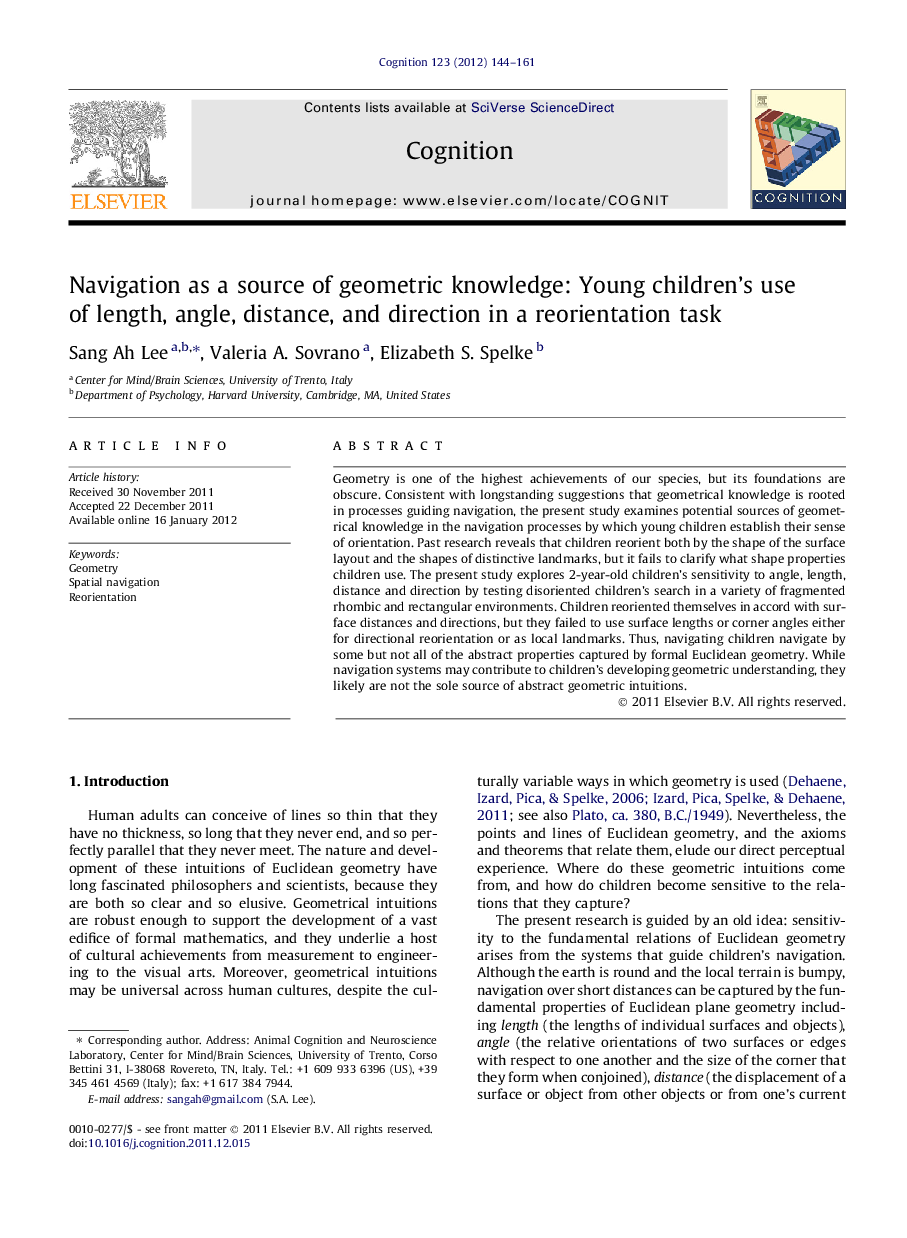| Article ID | Journal | Published Year | Pages | File Type |
|---|---|---|---|---|
| 926521 | Cognition | 2012 | 18 Pages |
Geometry is one of the highest achievements of our species, but its foundations are obscure. Consistent with longstanding suggestions that geometrical knowledge is rooted in processes guiding navigation, the present study examines potential sources of geometrical knowledge in the navigation processes by which young children establish their sense of orientation. Past research reveals that children reorient both by the shape of the surface layout and the shapes of distinctive landmarks, but it fails to clarify what shape properties children use. The present study explores 2-year-old children’s sensitivity to angle, length, distance and direction by testing disoriented children’s search in a variety of fragmented rhombic and rectangular environments. Children reoriented themselves in accord with surface distances and directions, but they failed to use surface lengths or corner angles either for directional reorientation or as local landmarks. Thus, navigating children navigate by some but not all of the abstract properties captured by formal Euclidean geometry. While navigation systems may contribute to children’s developing geometric understanding, they likely are not the sole source of abstract geometric intuitions.
► We investigated young children’s use of geometric properties in a disoriented search task. ► To avoid confounds in angle, length, and distance, we tested fragmented arrays. ► Children successfully reoriented using distance and directions of extended surfaces. ► However, children failed to use angles and lengths to guide their navigation. ► Navigation may only partially serve as a basis for abstract geometric knowledge.
